--> zur deutschen Version
Spitsbergen Report No. 10
May 25th 2002
Top-Season
On Svalbard you have concrete reason to adore the snow and the coldness.
The more snow there is and the more the frost makes the fjords freezing over, the easier
you can move in the wilderness.
By the middle of april the most adverse winter weather is over, and together with the midnight sun it is
after all becoming milder. Svalbard begins to present itself from the very best side, its chocolate side.
The fruits of the frost can be harvested now.
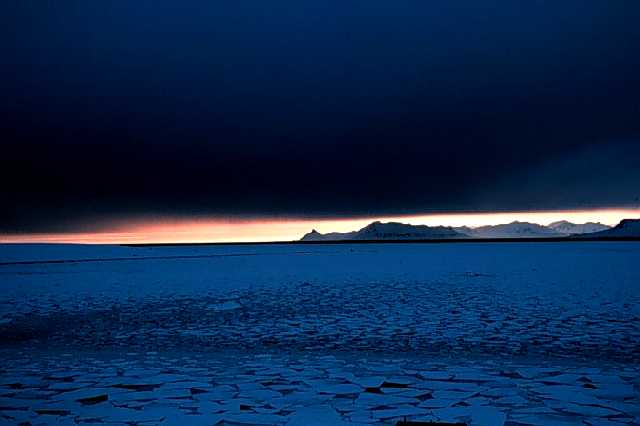
Midnight in Kongsfjorden.
Despite the mørketid-like cloud cover the sun cannot be driven away any longer. 24 hours per day
she is illuminating the amazing remnants of the long winter's night. The most astonishing appearances of
those is the sea ice in my opinion.
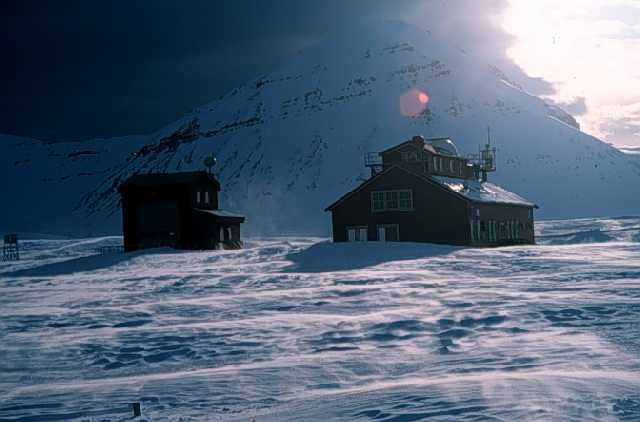
The german research station in Ny Ålesund has once again survived a winter. However, the weather ballons
garage to the left still prefers to be hid in the darkness a little bit.
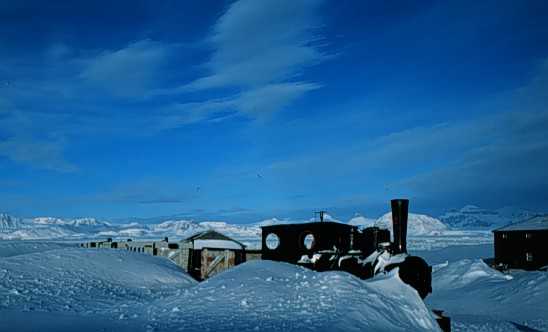
The dear locomotive is still existing, too. It nearly seems to be a bit overtaxed with the quite remarkable amounts of
snow of the winter of Ny �esund (see for summer comparison Report No. 2).
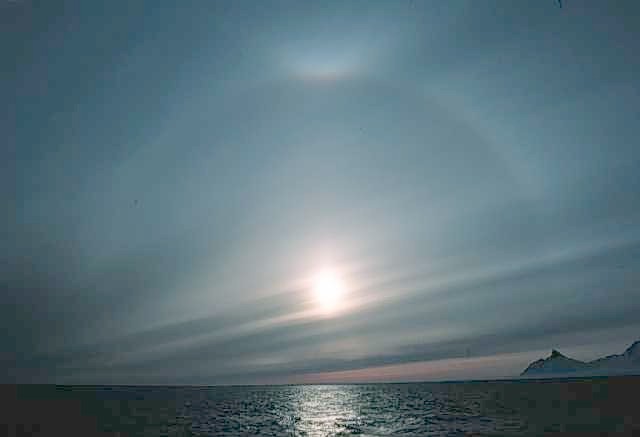
Ice crystals in the atmosphere give the sun some kind of corona, a so called halo.
Here a quite beautiful sample can be seen wearing a little crown on top.
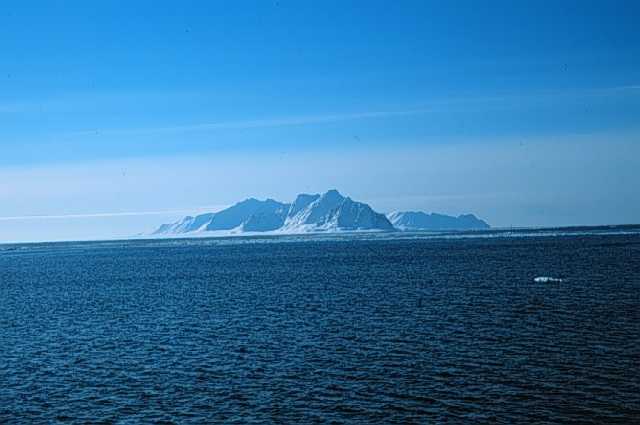
The steel clarity of the artic seas during the late winter constantly delivers postcard pictures.
Here Prins Karls Forlandet is depicted, an elongated island west of Spitsbergen. It is said to host
a lot of walrusses, very satisfied animals, because even for Master Ironpaw they are ways to handsome.
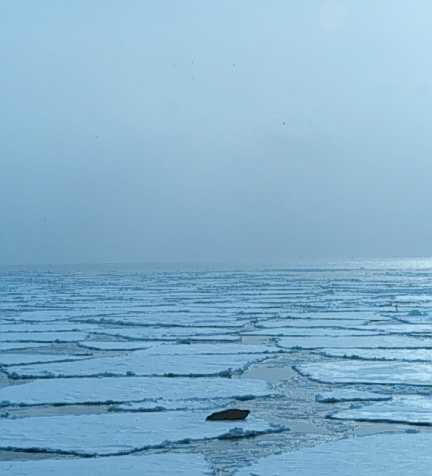
The "storkobbe" should be less satisfied according to this rule, as common meal for bears,
even though it gives a quite relaxed impression here. But the polar bear appearantly prefers to hunt
somewhere else in this moment.
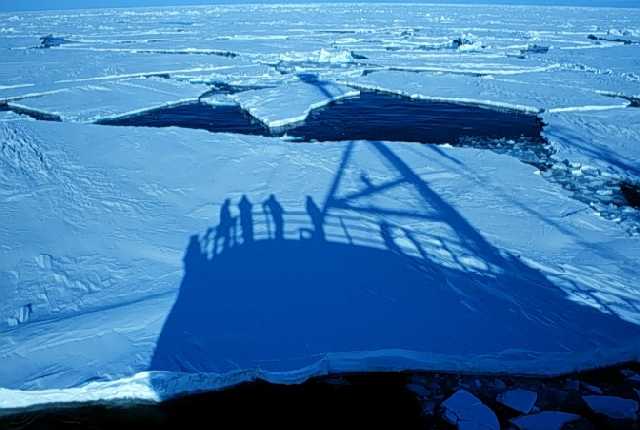
If it is a sign of contentment to lie down and relaxe, we must be extremely unsatisfied.
The research vessel R/V Lance is on its way to the Fram Strait and the Greenland Sea. Every ice floe that is trying to interfere with
us is being chopped right in the middle. With deafening noise and rumbling the icebreaker
is cutting itself ahead. If the ice is less solid and more porridge like you sometimes need
to be very, very patient.
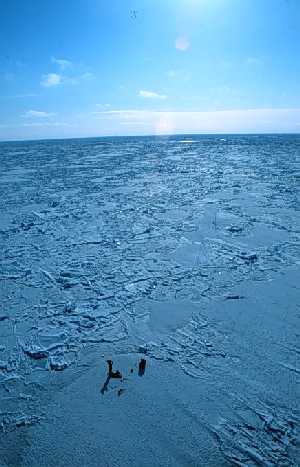
View from the crow's nest.
Somewhere on the way towards the west the ice drift gets that close that we have to surrender.
But actually we are where we wanted to be. A nice and capital ice floe is chosen to be the playing ground
of our curiosity.
Friendly enough this work makes sense from a scientific view, as measurments about the interaction of atmosphere,
ice and sea are just carried out scarcely.
In the ice you are safe against the sea sickness. The sea is totally quiescent. But if you study the horizon
more carefully you can observe the long wave swell that lifts and lowers the floes about half a metre every ten seconds.
It's quite strange that you see these waves only. You don't feel them at all.
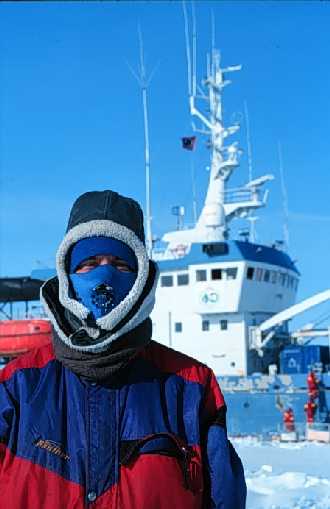
The west-journey brought us moreover out of the warm northern branch of the Gulf Stream that gives Svalbard around
15 degrees more than its latitudal neighbours. Therefore it's really cold, despite the near sea and the sunshine.
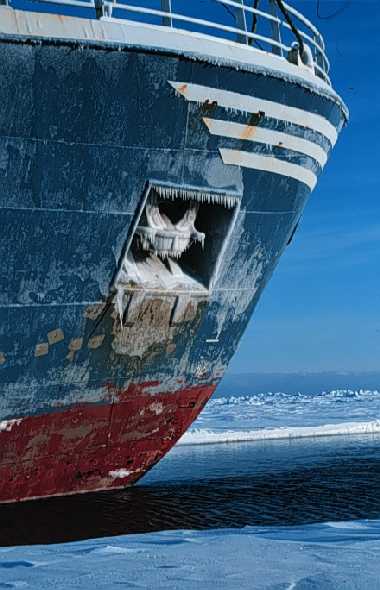
Here shown in the picturesque beginning: icing on the ship, the seemen's big threat in cold climates.
As soon as stronger wind is whipping up the sea and flushing the deck big plates of ice immediately
begin to form. They burden the ship and decrease its stability.
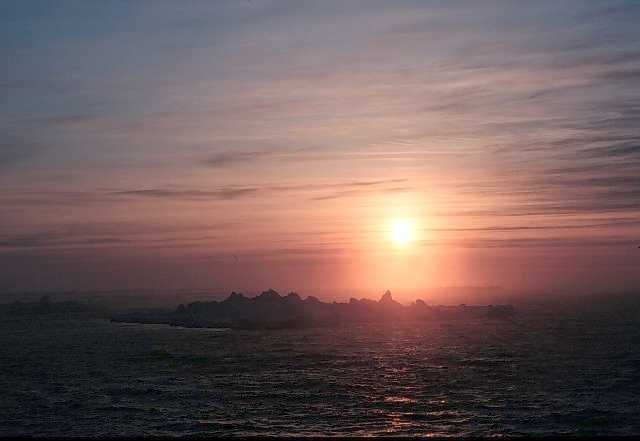
On the way back to Svalbard unreal creatures pass the boat. In more and more senseless-foolish shapes
the ice was creeping past us, gnashing anciently and splashing majestically in the water.
All the time you sensed it. Somehow you know this already, it seems so familiar and natural. All these cathedral and castle like fragments,
they must have been created.
And then he emerged.
Only a little moment and only with his back fin, but it was him: Grimnir, the ice dragon.
He made peace with the liquid state of phase, in his way. He did not perish in the heat and he did not dig down into the frozen earth either.
He chose the salty and therefore subzero degree maintaing sea as new home. And there he enjoys himself since,
with his playmates the cathedrals and castles out of ice and maybe some other ice dragons.
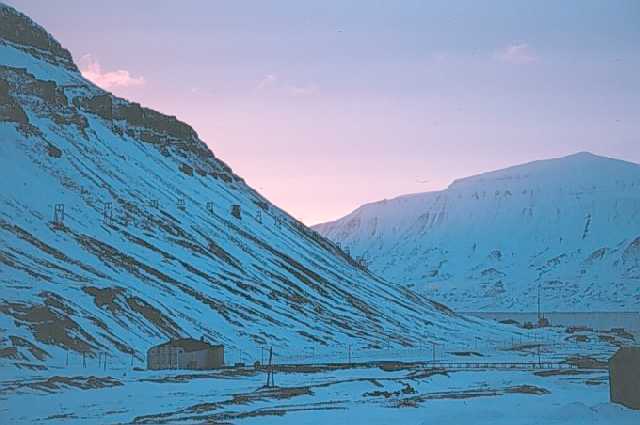
We chose good old Longyear-Valley as refuge.
A so far unrevealed but still vital part of this is "Huset", the house. Pub, the only cinema, the only disco, restaurant
and space for cultural life in one. During the weekends the entrance is free until 12, later 50 NOK are due.
Thus, on good Saturdays right before midnight hectic drinking- and running activity sets in.
The music is, on all time scales, very fractal there. It is pretty similar to itself, both within one night and between different weeks,
mostly also within one song. It's sometimes even rumoured, it would be self identical.
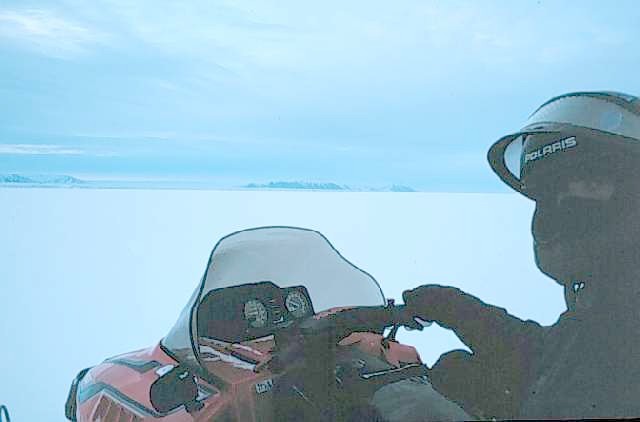
Also independent on our institution of education we went out to harvest the frost's fruits.
Here you can see Malte on Storfjorden at the east coast
of Svalbard. To the left you can already spot our aim: Negribreen with its tremendous front towards
the frozen fjord.
This british double-zero-agent Farmer (bonde is farmer in norwegian) will look like flying heriocally
down this front on his snowmobile in his next stroke. However, a couple of weeks ago some people flying
in a helicopter were filming around there and told, they'd be Jam-Boom-amateurs or animateurs or something like that.
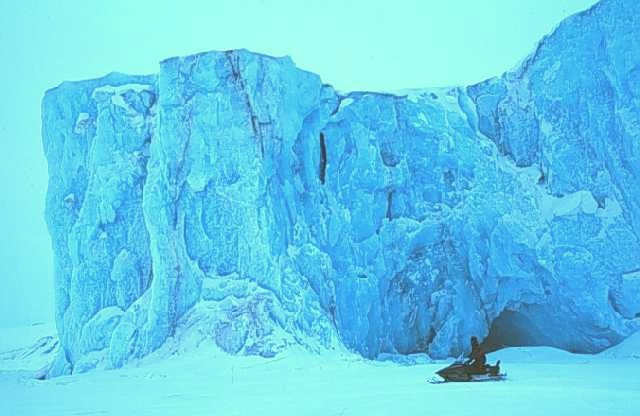
Arrived at the glacier front, I suddenly felt like in a level of Doom. The environment had turned that geometric and
simplified that it was almost scary. Behind you 100 km of frozen fjord, in front 30 metres of blue wall and aloft faintly
some sky and nothing else. Except for your head with three question marks:
will my scooter last all they way back,
will a polar bear come right now to feed on me and will I ever be able to digest all these impressions without becoming
all unpresentable in the real world?
In this picture you can see a local projection of the glacier front, with Regine and Niels in the foreground.
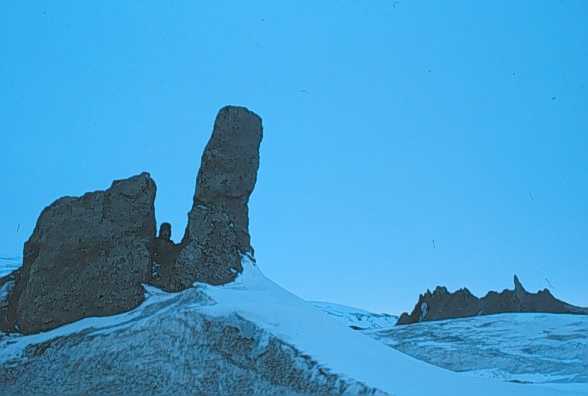
On the way back we wanted to pop into the bay of Hayesbreen, another glacier.
But this indexfinger moraine could have told us already. This glacier is different. The snow if existent at all was brown,
the ice filthy and the whole glacier a creature that had suffered for several thousands of years without any chance of recovery.
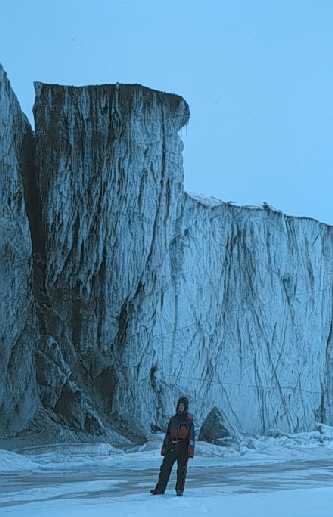
Slightly irritated we still approached the front. But the ice's brown colour scared us away soon.
The chocolate season didn't satisfy us as explanation.
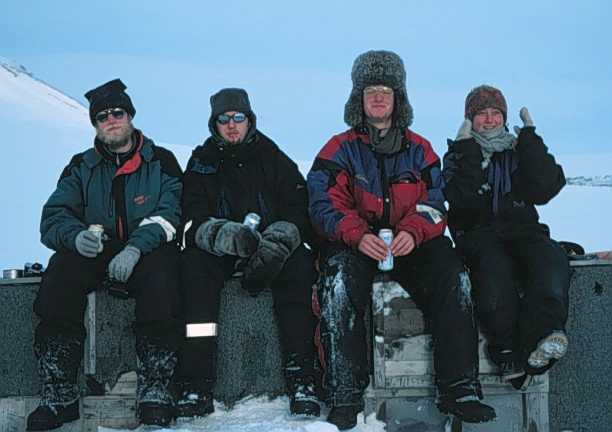
However, we survived this trip. In the end proudly the paritcipants of this german trip on the roof
of our bivouac box (cabin officially):
Malte J., Martin M., Imke S. and Niels v.F..
Back to overview
| |